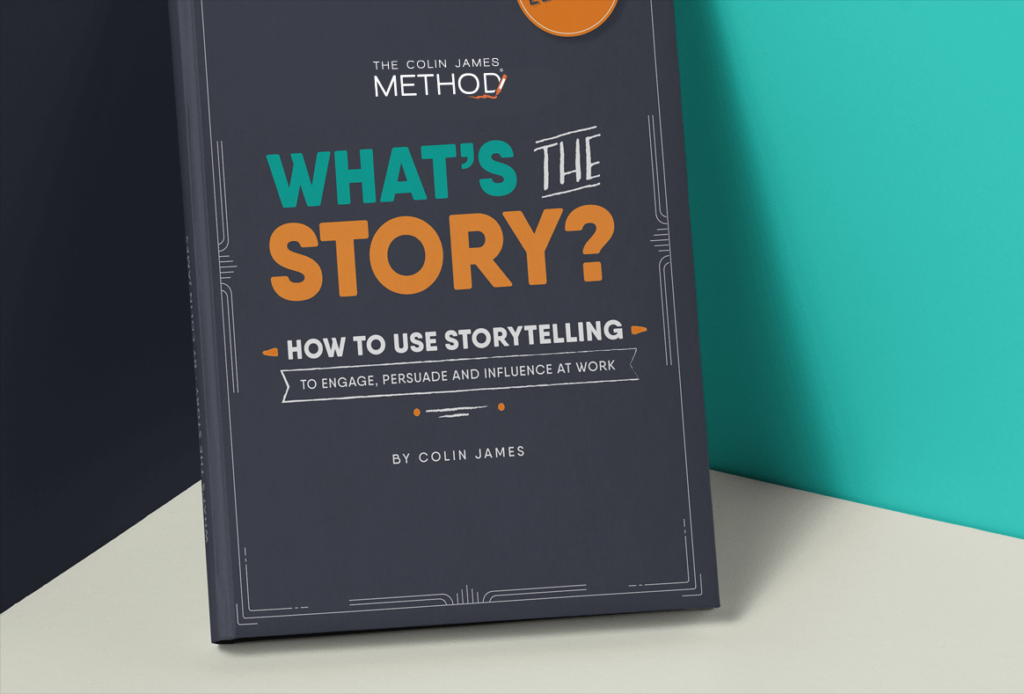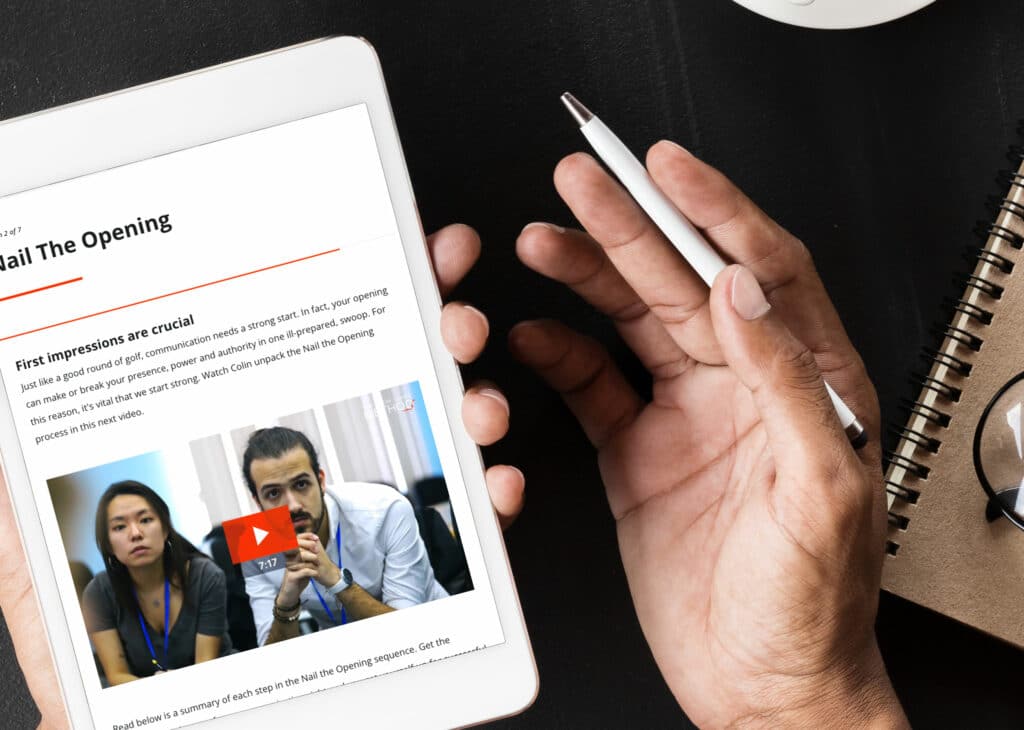Summary
- A robust L&D strategy is integral to organizational success, aligning employee development with business objectives.
- Companies offering learning opportunities tend to retain talent longer and attract high-quality candidates.
- Integrating L&D initiatives with overall organizational goals ensures a coherent approach.
Introduction
The share of workers getting on-the-job training has fallen from about a third in 2005 to roughly 20% today. And yet, an organisation’s learning and development strategy is fundamental to its overall business strategy.
If you’re currently looking for ways to implement learning and development strategies within your team or business, either by training your teams internally or outsourcing learning to training experts, today we’re going to take a look at what a good L&D strategy looks like.
What is a Learning and Development Strategy?
A learning and development (L&D) strategy is a plan that outlines how your organisation will develop its employees’ skills, knowledge and abilities. It should be aligned with the organisation’s overall business strategy and goals, and tailored to the specific needs of the workforce.
Why Should you Have one?
Having a strong learning & development strategy is essential for organisations that want to succeed in the long term. It helps to create operational resilience by building a highly skilled, engaged and satisfied workforce.
Let’s say your company is developing a new product. The L&D strategy can roadmap the training of employees on the new product and how to sell it to customers. Communication training is especially powerful when there are technical experts who struggle to get across the product’s value and benefits.
Or perhaps your company is experiencing high staff turnover. Developing a learning and development strategy will help you to identify and address the root causes of the turnover and develop programs to retain those employees.
What are the Benefits?
We’ve touched on some of these already but let’s break it down even further.
Attract and retain talent
Probably the most obvious benefit of an effective L&D strategy is staff retention. Back in 2019, LinkedIn’s Workforce Learning Report found that a whopping 94% of employees would stay at a company longer if it invested in helping them to learn.
Alison Carter, Master Facilitator and Executive Coach at Colin James Method, emphasises the creation of cross-functional training opportunities to facilitate internal career progression. This approach is designed to enhance staff retention rates, ensuring that employees can grow within the organisation without needing to seek external opportunities.
As well as retaining employees, an effective L&D strategy should also attract top talent to your business. Over the past several decades, employment has shifted from staying with the same company for a lifetime to a model where workers move from enterprise to enterprise based on what benefits (not simply financial) they can receive.
Excellent training opportunities give ambitious talent a clear avenue to upskill and take that next step in their career.
Improved employee performance, productivity and creativity
When employees have the skills and knowledge they need to do their jobs effectively, they are more likely to be productive and perform well.
Not only that, learning is the foundation of creativity. When employees are constantly learning and growing, they are more likely to come up with fresh ideas and innovative solutions to problems. Ultimately, this leads to a better-performing team.
A more competitive workforce
Henry Ford famously said, “The only thing worse than training your employees and having them leave is not training them and having them stay.”
There is a need today for businesses to provide learning opportunities in order to remain competitive. The risk that an employee might leave once you’ve invested in their training is far outweighed by the potential consequences of a perpetually under-skilled workforce, creating life-long learners.
In today’s rapidly changing business world, organisations need to have a workforce that is adaptable and can learn new skills quickly. A strong learning strategy and policy can help organisations to develop a more competitive and resilient workforce, giving the organisation an edge in a saturated marketplace.
Increased employee engagement and satisfaction
Employees who are given opportunities to learn and grow are more likely to be happy, engaged and satisfied with their jobs.
This is not simply about providing new knowledge, it’s about providing the right training at the right time. It’s essential to listen to employees and understand what their learning preferences are, in order to produce an L&D strategy that meets staff needs as well as organisational goals.
Paul Bindig, Lead Facilitator & Coach at Colin James Method, underscores the significance of genuine care from an organisation towards the progression and development of its workforce. It transcends the mere fulfilment of checkboxes on development plans, focusing instead on fostering a culture of continuous growth and support.
So let’s look at how to build an effective corporate learning strategy.
[How To] 11 Steps to Building an L&D Strategy
1. Align with business strategy
The first step is to understand your organisation’s overall business strategy and goals. What skills and knowledge do employees need to help the organisation achieve its goals? Once you have a good understanding of the business strategy, you can start to develop a learning and development strategy that is aligned with it.
This strategic alignment ensures that every learning initiative directly contributes to the overarching objectives, creating a seamless integration between organizational growth and employee development.
2. Define and design with stakeholders
It is important to involve business leaders and employees in the development of the L&D strategy. They can provide valuable insights into the skills and knowledge that are needed to be successful. Business leaders can also help to identify the resources that are available to support the L&D strategy for skill development.
By fostering a collaborative approach that includes input from various stakeholders, the learning and development strategy becomes a collective effort, drawing on the diverse expertise within the organization to create a more comprehensive and well-rounded plan.
3. Determine employee capabilities and identify skills gaps
Once you have a good understanding of the organisation’s business strategy and the skills and knowledge that employees need, you can start to assess the current capabilities of the workforce. This can be done through surveys, performance reviews, and other methods.
Once you have a good understanding of the current capabilities of the workforce, you can identify the skills gaps that need to be addressed. This meticulous examination of existing skills and competencies forms the foundation for targeted and effective learning interventions.
4. Design learning journeys
Once you have identified the skills gaps that need to be addressed, you can start to design learning journeys for employees. Learning journeys are tailored to the specific needs of each employee and they identify the steps that employees need to take to develop the skills and knowledge they need.
The individuality of this approach is especially important where there exists neurodiversity in the workplace. Recognizing and accommodating diverse learning preferences ensures that the learning journey resonates with each employee, optimizing the effectiveness of the developmental process.
5. Implementation of L&D initiatives
Once you have designed learning journeys for employees, you can start to implement the L&D initiatives. This may involve developing formal training programs, providing on-the-job training, or offering employees access to online or virtual learning resources.
The seamless execution of these initiatives requires a well-coordinated effort, combining the expertise of trainers, the engagement of participants, and the integration of diverse learning modalities to create a comprehensive and impactful learning experience.
6. Employee follow up
Illona Vass, Communication Coach at Colin James Method, recommends providing clear action plans and implementation strategies alongside training initiatives.
This includes structured follow-up, either through internal or external support, to seamlessly integrate newfound knowledge into the workplace without overwhelming participants with additional burdens.
Sustaining the momentum of learning through strategic follow-up ensures that newly acquired skills are not only retained but actively applied in the day-to-day work environment, reinforcing the value of the learning journey.
7. Evaluation of the L&D strategy
It is important to evaluate the effectiveness of the L&D strategy on an ongoing basis. This can be done by tracking employee performance, measuring customer satisfaction, and conducting surveys. The evaluation results can be used to improve the learning and development strategy framework over time.
Continuous evaluation serves as a feedback loop, allowing the organization to adapt and refine the L&D strategy in response to evolving organizational needs and the dynamic landscape of the industry, ensuring the ongoing relevance and effectiveness of the learning initiatives.
8. Embracing E-Learning Platforms
In the digital era, the integration of e-learning platforms significantly enhances the flexibility and accessibility of L&D initiatives. These platforms empower employees to learn at their own pace, fostering a culture of continuous education.
Through a diverse array of online courses, webinars, and interactive modules, employees gain access to a rich repository of knowledge that transcends geographical barriers, promoting a globalized approach to learning within the business. The versatility of e-learning accommodates varied learning styles, ensuring a personalized and inclusive educational experience for every participant.
9. Virtual Reality for Practical Training
The incorporation of virtual reality (VR) into L&D initiatives adds a new dimension to practical training. Particularly beneficial in industries where hands-on experience is crucial, VR provides realistic and immersive successful learning experiences.
With the ability to simulate complex scenarios, employees can engage in lifelike situations, honing their skills in a risk-free environment. This not only enhances the effectiveness of training but also instils confidence in employees, preparing them to navigate real-world challenges with a heightened level of proficiency and competence.
The interactive nature of VR transforms learning from a passive endeavour to an engaging and participatory adventure, driving knowledge retention and practical application.
10. Overcoming Resistance to Change
The implementation of a new learning strategy may face resistance from employees accustomed to traditional methods. Effective communication of benefits and providing support during the transition are essential for mitigating resistance.
Creating an open environment where everyone feels valued, listened to and respected is essential for promoting inclusiveness. Businesses should develop support networks for employees with learning differences, and ensure neurodiverse individuals are given access to strategies and guidance to help them carry out their duties successfully.
From regular breaks to assistive technology, employers and employees need to work together to make sure everyone feels comfortable and welcome in the workplace, enhancing company culture.
Recognizing and accommodating neurodiversity in the business is paramount. Tailoring L&D programs to diverse learning styles ensures that every employee, regardless of neurodiversity, can thrive and contribute effectively.
11. Budgeting and ROI Analysis
Efficient management of the budget allocated for L&D initiatives is vital. Regular analysis of the return on investment (ROI) ensures that resources are allocated effectively and deliver tangible benefits to the organization through development.
Organizations should adopt a comprehensive approach to budgeting that goes beyond mere financial considerations. The budget should align with the strategic goals of the organization, ensuring that the allocated funds are directed towards initiatives that directly contribute to the overall mission and vision.
Emerging L&D Trends
Microlearning for Skill Precision
The traditional approach to training often involves lengthy sessions. However, the rise of microlearning is transforming the business landscape.
Short, focused bursts of learning allow employees to acquire specific skills rapidly, aligning perfectly with the demands of a fast-paced work environment. This agile approach to learning and development ensures that individuals can adapt swiftly to industry changes and emerging trends.
Adaptive Learning Platforms
With advancements in technology, adaptive learning platforms are gaining prominence. These platforms use data-driven insights to tailor learning experiences based on individual progress and performance, ensuring personalized and efficient learning journeys for each employee for their professional development.
The integration of adaptive learning platforms into a businesses broader learning and development strategy enhances the overall effectiveness of training initiatives, providing employees with a customized and adaptive path to mastery.
Gamification for Engagement
Incorporating gamification elements into training programs enhances engagement and motivation. Points, badges, and interactive challenges create a more enjoyable learning experience, fostering a competitive advantage, yet collaborative atmosphere within the workforce.
This infusion of gamification principles into learning and development strategies not only makes the educational process more enjoyable but also stimulates healthy competition among employees, driving a collective commitment to continuous improvement.
Future Frontiers: Innovations in Learning and Development
Augmented Reality (AR) Integration
The integration of augmented reality (AR) into learning modules opens new dimensions for skill acquisition. AR overlays digital information onto the real world, allowing employees to visualize complex processes or scenarios.
For example, technicians can receive step-by-step guidance for equipment maintenance overlaid onto the physical machinery, enhancing comprehension and application.
This immersive learning experience, integrated into a comprehensive learning and development framework, transforms theoretical knowledge into practical, hands-on expertise.
Personalized Learning Paths with AI
Harnessing the power of artificial intelligence (AI) for learning goes beyond adaptive platforms. AI can analyze individual learning styles, preferences, and career aspirations to tailor personalized learning paths.
This ensures that each employee receives content relevant to their role and future career goals, fostering a sense of investment in their professional development. Integrating AI-driven personalization into learning and development strategies creates a more individualized and impactful learning experience, resonating with employees’ specific needs and aspirations.
Holistic Well-being Programs
Learning and development strategies are expanding beyond professional skills to encompass holistic well-being. Integrating mental health awareness programs, stress management workshops, and mindfulness training into L&D initiatives contributes to a healthier, more resilient workforce.
A balanced and thriving employee is not only more productive but also more likely to engage in continuous learning. This holistic approach to learning and development recognizes that employee well-being is a cornerstone for sustained professional growth.
Continuous Feedback Loops
Traditional performance reviews are making way for continuous feedback loops integrated into the learning experience. Real-time feedback from peers, and managers, and AI-driven assessments allow employees to adjust their learning paths dynamically within the business.
This iterative process ensures that learning is not a one-time event but a continuous cycle of improvement. Embracing continuous feedback within the context of learning and development strategies establishes a culture of ongoing improvement, where employees actively seek and provide feedback to enhance their skills and contribute to organizational success.
Conclusion
Colin James Method provides a wide range of online, virtual and on-site training in corporate communication, leadership, executive influence, business storytelling and more. To find out more about our corporate training, browse the links below:










